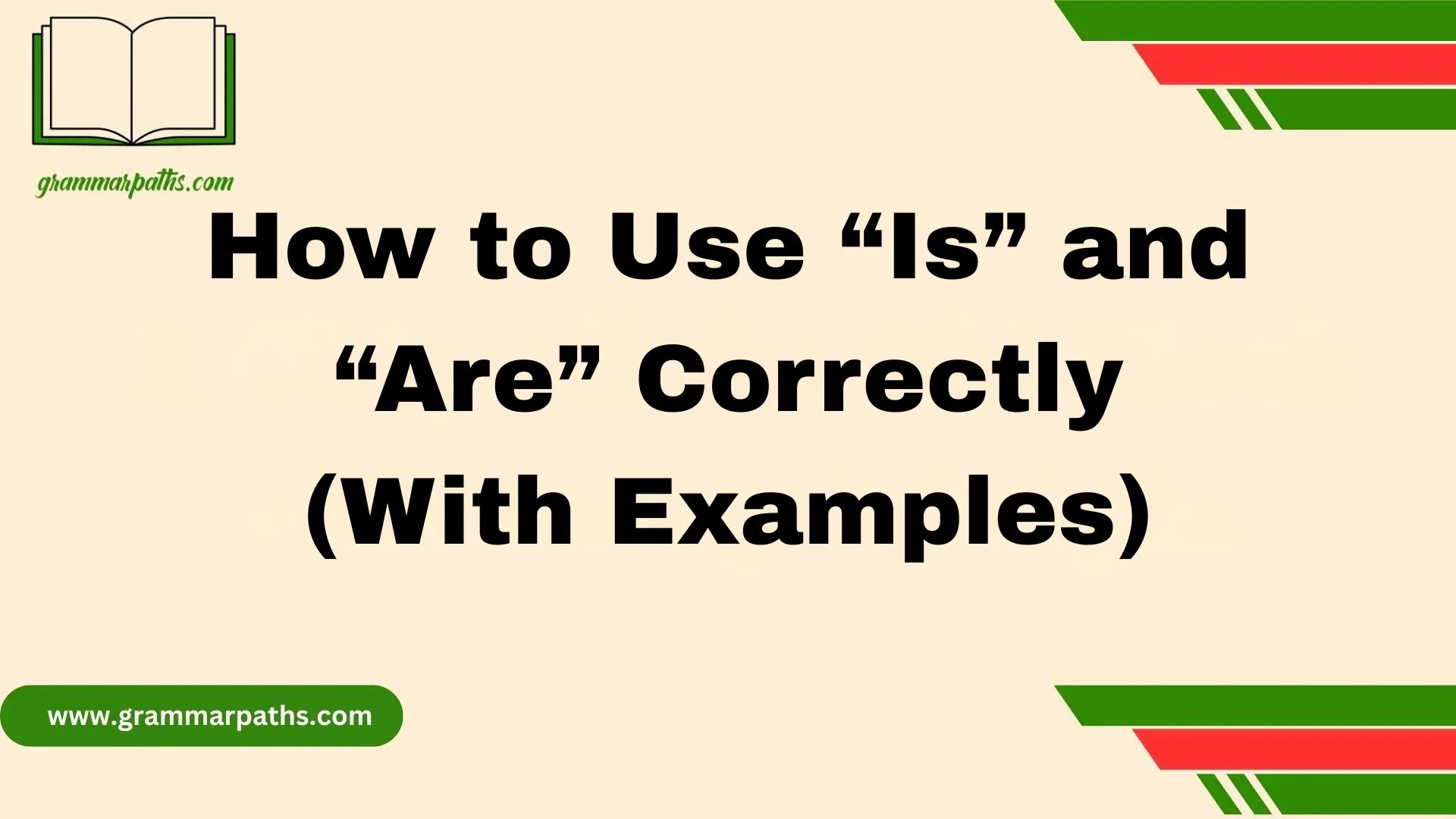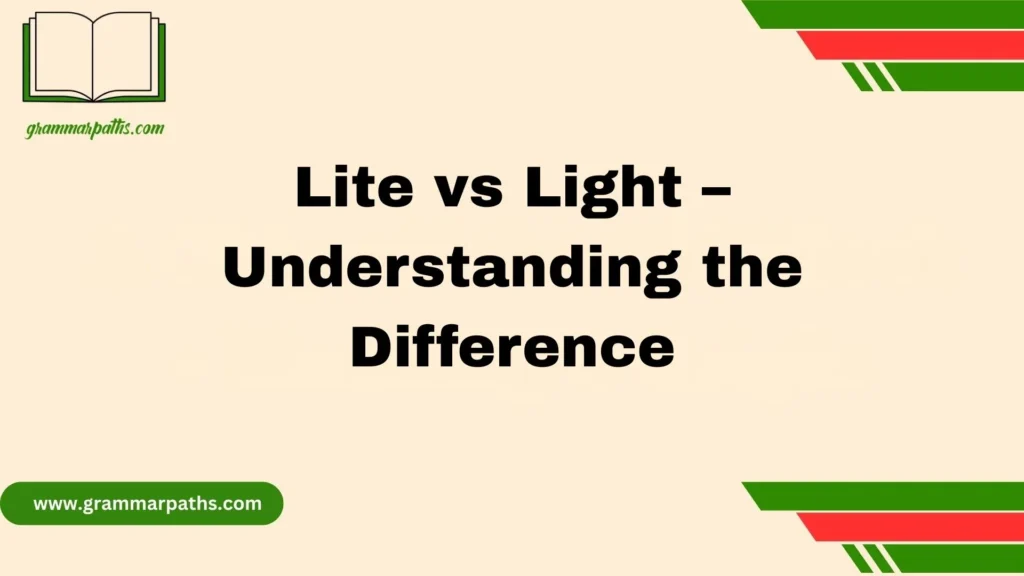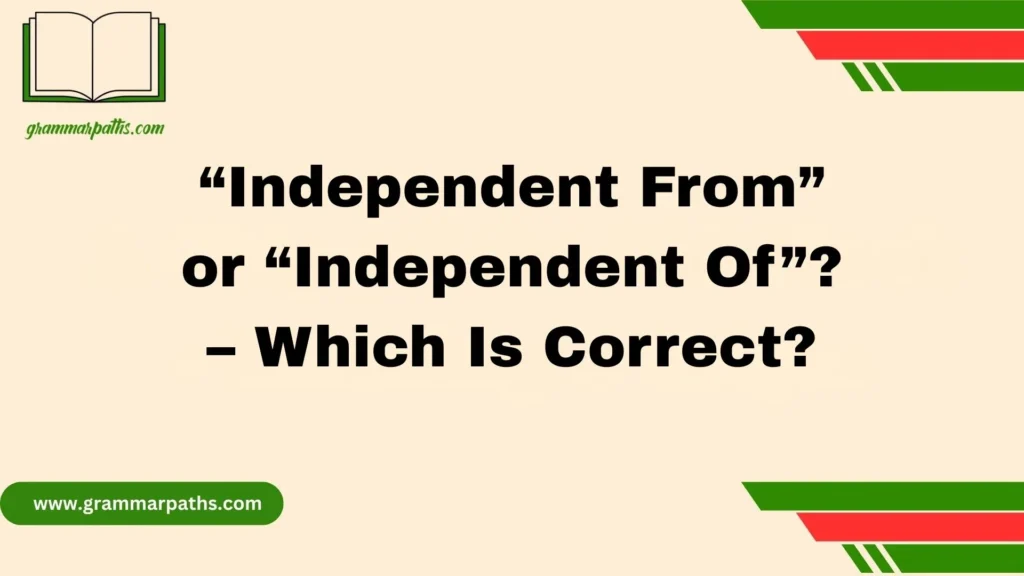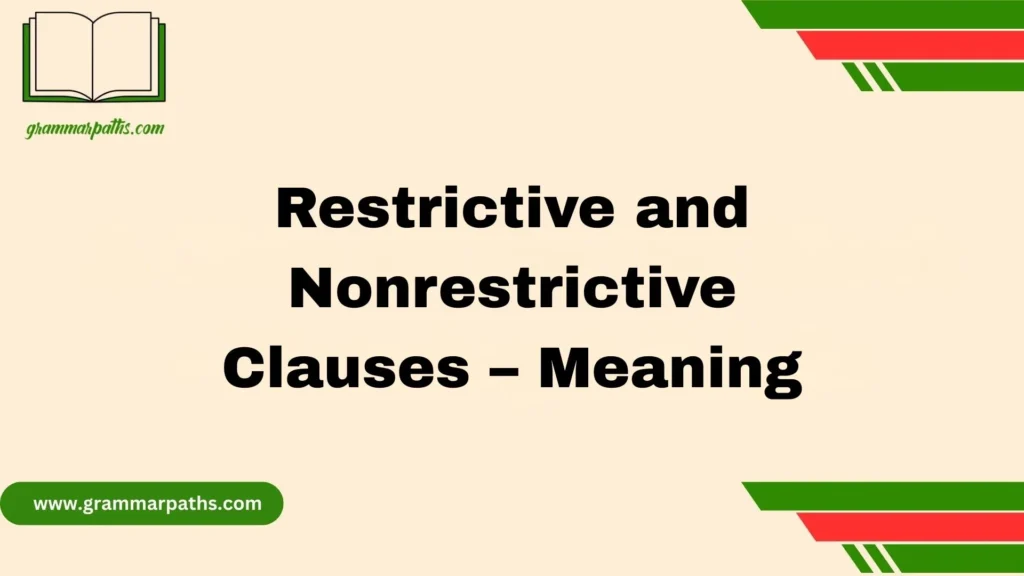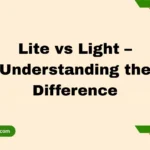Mastering subject-verb agreement is one of the most important aspects of English grammar, and it often comes down to knowing when to use “is” and when to use “are.” Both words are forms of the verb “to be”, but their correct usage depends on the subject-verb agreement rules. Understanding this concept is crucial for writing and speaking clearly, whether in academic writing, professional communication, or everyday conversation.
The word “is” is typically used with singular nouns and pronouns, while “are” pairs with plural nouns and pronouns. For example, we say “She is happy” but “They are happy.” This may sound simple, but many learners struggle with tricky cases such as collective nouns, compound subjects, or indefinite pronouns where the choice between “is” and “are” is not immediately obvious.
In this guide, we will break down the rules of subject-verb agreement, provide clear examples, and highlight common mistakes so you can confidently decide whether to use “is” or “are” in any sentence. By the end, you will not only avoid grammar errors but also improve your English fluency and overall communication skills.
The Core Rule of “Is” and “Are”
At the heart of the issue lies subject–verb agreement. The verb must agree in number with the subject of the sentence.
- Singular subject → “is”
- Plural subject → “are”
Here’s a quick chart for the verb to be in the present tense:
| Subject | Correct Verb | Example |
| I | am | I am happy. |
| You | are | You are smart. |
| He/She/It | is | She is kind. |
| We | are | We are ready. |
| They | are | They are late. |
So, when you decide between is and are, ask: Is my subject singular or plural? That’s the key starting point.
Using “Is” Correctly
Singular Nouns and Pronouns
When the subject is one person, object, or idea, the verb takes is.
- The book is on the table.
- She is my best friend.
- My dog is playful.
Abstract and Uncountable Nouns
Uncountable or mass nouns take is because they represent a single concept.
- Happiness is priceless.
- Water is essential for life.
- Information is power.
Singular Collective Nouns
Collective nouns can cause confusion. If the group is seen as one unit, use is.
- The team is winning.
- The family is large.
- The committee is meeting today.
Examples in Real Sentences
- “This book is one of my favorites.”
- “The news is surprising.”
- “The orchestra is rehearsing for tomorrow’s concert.”
Using “Are” Correctly
Plural Nouns and Pronouns
When the subject refers to more than one, use are.
- The students are ready for the test.
- They are excited about the trip.
- Cars are parked outside.
Plural Collective Nouns
When the group is viewed as individual members, use are.
- The team are arguing among themselves.
- The jury are divided in their opinions.
Compound Subjects
When two or more singular nouns are joined by and, use are.
- My brother and sister are here.
- Coffee and tea are served.
Examples in Real Sentences
- “The children are playing in the park.”
- “My shoes are worn out.”
- “The houses are painted brightly.”
Special Cases and Exceptions
English wouldn’t be English without exceptions. Here are some special cases you’ll encounter.
Collective Nouns: “Is” vs. “Are”
- One unit: “The band is famous worldwide.”
- Individual members: “The band are tuning their instruments.”
Indefinite Pronouns
Some indefinite pronouns are singular (everyone, each, anybody). Others are plural (many, few, several).
- Everyone is welcome.
- Few are missing.
- Many are waiting.
Titles, Names, and Organizations
Titles, names of books, movies, countries, or organizations are treated as singular, even if they look plural.
- “The United States is a diverse country.”
- “‘Friends’ is a popular sitcom.”
- “The United Nations is headquartered in New York.”
Fractions and Percentages
The verb agrees with the noun that follows.
- Two-thirds of the cake is gone.
- Two-thirds of the people are here.
- Fifty percent of the money is missing.
“There Is” vs. “There Are”
Introducing Sentences with “There”
Sentences beginning with “there” use a dummy subject, which means the verb agrees with the real subject that comes after.
Rule in Action
- There is a book on the desk.
- There are books on the desk.
Common Mistakes
Many people mistakenly use “there’s” with plurals in casual speech. While common, it’s grammatically incorrect.
- There’s many options.
- There are many options.
Everyday Examples
- “There is a problem with your account.”
- “There are plenty of seats available.”
Tricky Phrases and Advanced Usage
“A Number of” vs. “The Number of”
- A number of students are absent.
- The number of students is increasing.
“None Is” vs. “None Are”
Traditionally, none is singular, but modern usage allows both depending on context.
- None of the money is missing.
- None of the employees are available.
Measurements and Amounts
When referring to a total amount, use is. When referring to countable units, use are.
- Ten dollars is enough for lunch.
- Ten miles is a long walk.
- Ten dollars are lying on the table.
Quick Reference Guide
Here’s a handy table for quick review:
| Subject Type | Correct Form | Example |
| Singular noun | is | The cat is sleeping. |
| Plural noun | are | The cats are sleeping. |
| Uncountable noun | is | Knowledge is power. |
| Collective noun (unit) | is | The class is ready. |
| Collective noun (individuals) | are | The class are debating. |
| Indefinite pronoun (singular) | is | Everyone is present. |
| Indefinite pronoun (plural) | are | Many are missing. |
| Title or name | is | “The Avengers” is a movie. |
| Measurement (total) | is | Ten dollars is enough. |
| Measurement (individual count) | are | Ten dollars are on the floor. |
Common Mistakes to Avoid
- Using are with singular collective nouns: The team are winning.
- Forgetting agreement in long subjects: The man with the dogs are friendly.
- Misusing there is with plurals: There is many reasons.
Correct forms:
- The team is winning.
- The man with the dogs is friendly.
- There are many reasons.
Practice and Application
Test your understanding with these fill-in-the-blank exercises:
- The group of friends ___ planning a trip.
- My shoes ___ on the porch.
- There ___ many opportunities for growth.
- A number of players ___ injured.
- The number of applicants ___ growing.
Answers:
- is
- are
- are
- are
- is
Conclusion
Choosing between “is” and “are” comes down to understanding subject-verb agreement. Remember that “is” matches with singular subjects, while “are” matches with plural subjects. Paying attention to the noun or pronoun in the sentence will help you decide quickly and correctly. With practice, using the right form will become second nature, improving both your grammar and your communication skills.
Whether you are writing formal English, crafting business emails, or engaging in casual conversations, knowing how to use “is” and “are” correctly ensures your language remains clear, professional, and accurate.
FAQs
Q1: Can “is” ever be used with plural nouns?
No, “is” is only used with singular nouns and pronouns. Plural subjects always take “are.”
Q2: What about “you”? Should I use “is” or “are”?
The pronoun “you” always takes “are”, even when it refers to one person. Example: “You are my best friend.”
Q3: How do I decide quickly between “is” and “are”?
Check the subject of the sentence. If it’s singular, use “is.” If it’s plural, use “are.”
Q4: Do collective nouns use “is” or “are”?
It depends. If the group is seen as one unit, use “is” (e.g., “The team is strong”). If focusing on individuals, use “are” (e.g., “The team are arguing”).

Mia Rose is the passionate writer and founder of GrammarPaths.com, a resource dedicated to helping learners master English grammar, idioms, and writing skills with ease. With a deep love for language and years of experience in teaching and content creation, Mia simplifies complex grammar rules into clear, practical guides that readers can instantly apply.
